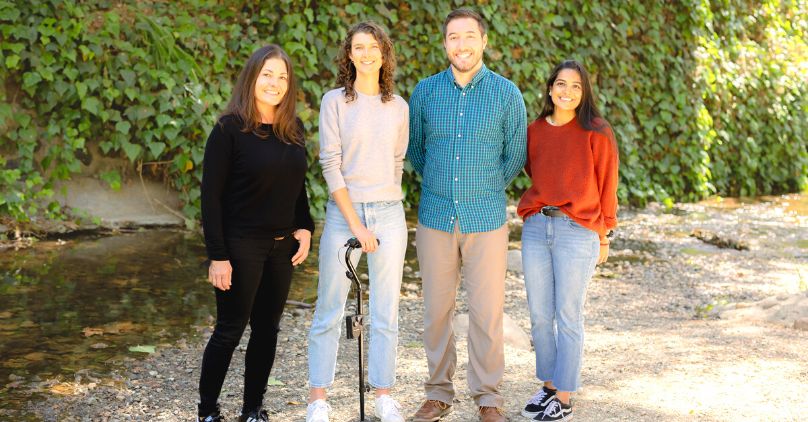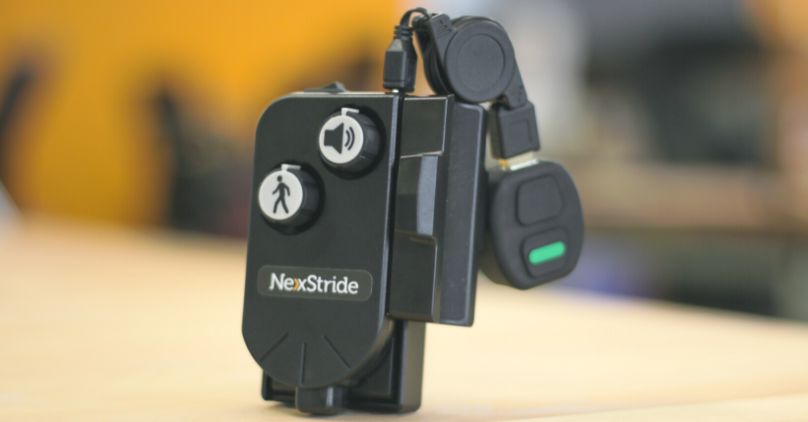The San Francisco-based medtech De Oro which aims to improve the quality of life for seniors with Parkinson’s has just recently closed its seed round with a $2.8M raise. The startup’s core product is a little black box called NexStride which solves the challenge of “freezing” during movement, faced by those living with Parkinson’s. By tricking the brain with certain sensory cues, “stuck” victims are able to regain their mobility.
The funds raised in this round will go towards scaling up De Oro’s operations and ensuring the device gets to those who need it the most. The seed round was led by True Wealth Ventures, with participation from AARP, StartUp Health, Capital Factory, Wai Mohala Ventures, Kachuwa Impact Fund, Barton Investments, HealthTech Capital, Wealthing VC Club, Rockies VC and Mentors Fund. The company raised $1.5M prior to this.
Freezing of gait explained
10 million people around the globe are suffering & struggling with Parkinson’s disease. Ranking as the fastest-growing neurodegenerative disease globally, it attacks the Central Nervous System, affecting movement and causing tremors quite often. An estimated 80% of Parkinson’s victims experience “freezing of gait”, which makes an individual feel as if their feet are glued to the ground, denying them mobility.
This spontaneous onset of immobility is one of the most debilitating symptoms of Parkinson’s owing to its emotional frustration and danger posed. This has often made many unable to go about their normal daily routine. Furthermore, since freezing of gait can occur without alarm, it’s a leading cause of falls and associated injuries.

Inventing NexStride & founding De Oro Devices
Sidney Collin has long been obsessed with how the brain & body works both separately as well as when interacting. That obsession saw her pursue a biomedical engineering undergrad programme at Cal Poly, in San Luis Obispo, later working for a brain-computer interface company in France.
Towards the end of her time at Cal Poly, Collin met an elderly man named Jack who was struggling with Parkinson’s disease. Jack opened his world up to Collin and showed her the daily struggles of living with Parkinson’s. The specific “freezing of gait” challenge often left the old man glued to the floor, or worse, taking a spill. The former engineer Jack observed his success using visual and auditory cues to “unfreeze” his gait while at his physical therapist’s office. His design & problem-solving instinct kicked in, with the retired engineer envisioning a device that could be built to replicate this technology at home and on the go.
Jack understood that if he could get a portable version of this therapy tool, he would attain the freedom of movement. All Jack needed was the right entrepreneur to inspire. Sidney proved to be the person Jack needed. She was hooked and promptly grabbed another engineering student, embarking on building a device for Jack. Fast forward to three months later she had a working prototype that changed Jack’s life almost immediately. At a support group for people with Parkinson’s, she met many who were in desperate need of the device and that’s how she knew she landed on something big. Teaming up with William Thompson, De Oro Devices was founded in 2018 and began developing the manufacturing framework for their first product called NexStride.
How NexStride restores mobility to Parkinson’s victims
NexStride attaches to a cane or walker, producing certain sensory cues that alter the brain’s intention. It achieves this by projecting a green laser line in front of its user. This in turn influences the brain to send signals to the legs because its intention has switched from “step forward” to “step over the line.”
The device also contains a speaker with a metronome. The metronome’s consistent beat, which has been proven to assist those with trouble walking, complements the laser and gives its users a beat to walk to. Many who have tested the device are describing NexStride as nothing less than a miracle. Contrary to similar devices, NexStride is light and has the ability to latch onto any cane or walker. Other devices that display similar sensory cues are often heavy and built into a walker.

More on De Oro Devices
The MedTech startup is female-led by Sidney who serves as CEO. Panzura CEO & Forbes Business Council member Jill Stelfox also features among De Oro’s leadership as an Advisory board member.
NexStride is just the first device by De Oro Devices that’s assisting people to thrive with independence & better quality of life as they age. It costs $500, however, veterans can get a NexStride from Veteran Affairs (VA) services. What De Oro builds next will certainly be worth noting.















